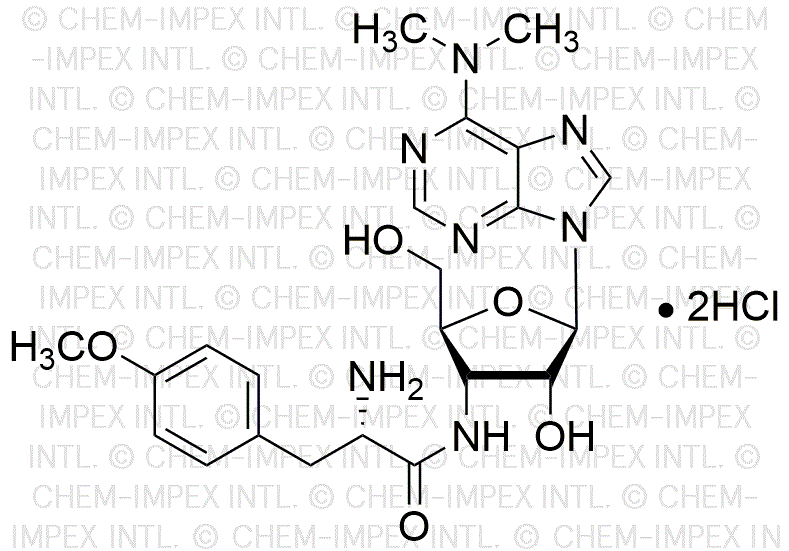Puromycin dihydrochloride from Streptomyces alboniger powder is widely utilized in research focused on:
- Cell Culture Research: This compound is commonly used as a selective agent in cell culture to eliminate untransformed cells, allowing researchers to maintain only those cells that have been successfully modified or transfected.
- Antibiotic Applications: It serves as an effective antibiotic in microbiological studies, particularly in the selection of genetically modified organisms, ensuring that only the desired strains survive in a mixed population.
- Biotechnology and Genetic Engineering: Puromycin is essential in the production of recombinant proteins, as it helps in the selection of cells that express the desired genes, streamlining the process of protein synthesis.
- Cancer Research: Researchers utilize this compound to study the effects of protein synthesis inhibition on cancer cells, providing insights into potential therapeutic strategies for targeting tumor growth.
- Pharmaceutical Development: It plays a role in drug discovery and development by aiding in the identification of new drug candidates that can effectively inhibit protein synthesis in pathogenic organisms.
General Information
Properties
Safety and Regulations
Applications
Puromycin dihydrochloride from Streptomyces alboniger powder is widely utilized in research focused on:
- Cell Culture Research: This compound is commonly used as a selective agent in cell culture to eliminate untransformed cells, allowing researchers to maintain only those cells that have been successfully modified or transfected.
- Antibiotic Applications: It serves as an effective antibiotic in microbiological studies, particularly in the selection of genetically modified organisms, ensuring that only the desired strains survive in a mixed population.
- Biotechnology and Genetic Engineering: Puromycin is essential in the production of recombinant proteins, as it helps in the selection of cells that express the desired genes, streamlining the process of protein synthesis.
- Cancer Research: Researchers utilize this compound to study the effects of protein synthesis inhibition on cancer cells, providing insights into potential therapeutic strategies for targeting tumor growth.
- Pharmaceutical Development: It plays a role in drug discovery and development by aiding in the identification of new drug candidates that can effectively inhibit protein synthesis in pathogenic organisms.
Documents
Safety Data Sheets (SDS)
The SDS provides comprehensive safety information on handling, storage, and disposal of the product.
Product Specification (PS)
The PS provides a comprehensive breakdown of the product’s properties, including chemical composition, physical state, purity, and storage requirements. It also details acceptable quality ranges and the product's intended applications.
Certificates of Analysis (COA)
Search for Certificates of Analysis (COA) by entering the products Lot Number. Lot and Batch Numbers can be found on a product’s label following the words ‘Lot’ or ‘Batch’.
*Catalog Number
*Lot Number
Certificates Of Origin (COO)
This COO confirms the country where the product was manufactured, and also details the materials and components used in it and whether it is derived from natural, synthetic, or other specific sources. This certificate may be required for customs, trade, and regulatory compliance.
*Catalog Number
*Lot Number
Safety Data Sheets (SDS)
The SDS provides comprehensive safety information on handling, storage, and disposal of the product.
DownloadProduct Specification (PS)
The PS provides a comprehensive breakdown of the product’s properties, including chemical composition, physical state, purity, and storage requirements. It also details acceptable quality ranges and the product's intended applications.
DownloadCertificates of Analysis (COA)
Search for Certificates of Analysis (COA) by entering the products Lot Number. Lot and Batch Numbers can be found on a product’s label following the words ‘Lot’ or ‘Batch’.
*Catalog Number
*Lot Number
Certificates Of Origin (COO)
This COO confirms the country where the product was manufactured, and also details the materials and components used in it and whether it is derived from natural, synthetic, or other specific sources. This certificate may be required for customs, trade, and regulatory compliance.


